Roles
The 31st COE fulfilled the Combat Engineer role within the 1st Southern Brigade RDF. The 31st COE maintains specialist’s skills were in line with their PDF counterparts.
Mobility
This involves improving the ability of friendly forces to move around the battlefield. The 31st COE fulfills this role by maintaining skills necessary for the;
- breaching and clearing of minefields
- gap & river crossing (infantry & vehicular bridge deployment)
- obstacle clearance (including use of explosives for obstacle reduction and provision of alternative access or egress points in the urban environment)
Counter Mobility
The aim of counter mobility operations is to reduce the ability of enemy forces to move around the battlefield. The 31st COE has the capability to;
- destroy bridges or buildings
- render roads or areas impassable to tanks
- create substantial roadblocks to deny roads to both infantry and mechanised enemy
- create extensive defensive obstacles ranging from barbed wire entanglements to defensive anti-tank minefields
Survivability
To improve the survivability of defensive positions the 31st COE can strengthen existing fortifications and supplement them with defensive trench systems, machine gun bunkers, mortar positions, etc...
Other roles
In addition, the 31st COE can deploy in the Battlefield Services role. This role principally relates to support of units operating considerable distances from a secure base and can range from the creation of substantial base camps, establishing a secure floodlit perimeter with defensive positions, erecting tented command positions and accommodation, providing on-site electricity generation and large scale on-site water purification.
The Basic Field Engineering role supplements the other roles, allowing the 31st COE to construct lifting and gap crossing devices with minimal equipment in demanding conditions.
Cmdt John Keane AR (Retired)
Cmdt Pat Lavin AR (Retired)
Cmdt Gerard Beatty AR (Retired)
Captain Gerard Russell AR (Retired)
Lt Gerard O'Donoghue AR
Company Sergeant Patrick Hincy AR (Retired)
Company Quarter Master Sergeant Martin Cronin AR
Training Sergeant Mark O'Reilly AR
Transport Sergeant Pops McGrath AR (Retired)
Sergeant Dwayne O'Doherty AR (Retired)
Corporal Gerard Arthur AR (Retired)
Corporal Shane O'Reilly AR
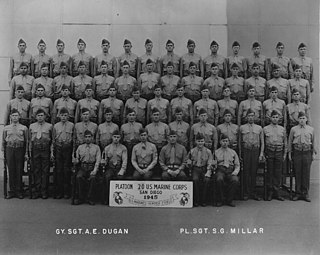
A platoon is a military unit typically composed of two to four squads, sections, or patrols. Platoon organization varies depending on the country and the branch, but a platoon can be composed of 20–50 troops, although specific platoons may range from 10 to 100 people. A platoon is typically the smallest military unit led by a commissioned officer. The platoon leader is usually a junior officer—a second or first lieutenant or an equivalent rank. The officer is usually assisted by a platoon sergeant.
Sergeant (Sgt) is a rank in use by the armed forces of many countries. It is also a police rank in some police services. The alternative spelling, serjeant, is used in The Rifles and other units that draw their heritage from the British light infantry. Its origin is the Latin serviens, 'one who serves', through the Old French term serjant.

A combat engineer is a type of soldier who performs military engineering tasks in support of land forces combat operations. Combat engineers perform a variety of military engineering, tunnel and mine warfare tasks, as well as construction and demolition duties in and out of combat zones.
The Battle of Two Sisters was an engagement of the Falklands War during the British advance towards the capital, Port Stanley. It took place from 11 to 12 June 1982 and was one of three battles in a Brigade-size operation all on the same night, the other two being the Battle of Mount Longdon and the Battle of Mount Harriet. It was fought mainly between an assaulting British force consisting of Royal Marines of 45 Commando and an Argentine Company drawn from 4th Infantry Regiment.

The Battle of Kapyong, also known as the Battle of Jiaping, was fought during the Korean War between United Nations Command (UN) forces—primarily Canadian, Australian, and New Zealand—and the 118th and 60th Divisions of the Chinese People's Volunteer Army (PVA). The fighting occurred during the Chinese Spring Offensive and saw the 27th British Commonwealth Brigade establish blocking positions in the Kapyong Valley, on a key route south to the capital, Seoul. The two forward battalions—the 3rd Battalion, Royal Australian Regiment and 2nd Battalion, Princess Patricia's Canadian Light Infantry, both battalions consisting of about 700 men each—were supported by guns from the 16th Field Regiment of the Royal Regiment of New Zealand Artillery along with two companies of US mortars, fifteen Sherman tanks from US 72nd Heavy Tank Battalion, two companies of the US 74th Engineer Combat Battalion and 1st Battalion, Middlesex Regiment. These forces occupied positions astride the valley with hastily developed defences. As thousands of soldiers from the Republic of Korea Army (ROK) began to withdraw through the valley, the PVA infiltrated the brigade position under the cover of darkness, and assaulted the 3 RAR on Hill 504 during the evening and into the following day. Five companies of the US and UK forces attached to 27th Brigade fled the battlefield without orders, expecting an imminent PVA breakthrough at the Kapyong Valley.

The Army Reserve (AR) is the reserve land component of the Irish Defence Forces. It is the second line reserve of the Irish Army. The Army Reserve involves active military service on a part-time basis, and is one of two elements of the Reserve Defence Forces, the other element being the Naval Service Reserve (NSR).

The company sergeant major (CSM) is the senior non-commissioned soldier of a company in the armies of many Commonwealth countries, responsible for administration, standards and discipline. In combat, their prime responsibility is the supply of ammunition to the company. They also oversee the distribution of other supplies, such as water or food, although that responsibility is mainly that of the company quartermaster sergeant (CQMS), and evacuating the wounded and collecting prisoners of war.
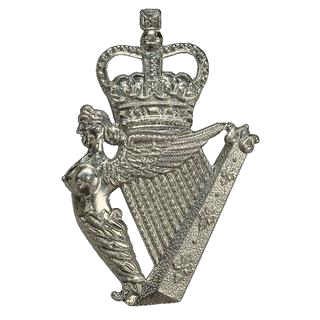
The Royal Irish Regiment is a light infantry regiment of the British Army. The regiment was founded in 1992 through the amalgamation of the Royal Irish Rangers and the Ulster Defence Regiment. Their oldest predecessor, the 27th Regiment of Foot, was first raised in June 1689 to fight in the Williamite War in Ireland. Other notable regiments in their lineage include the Royal Inniskilling Fusiliers, Royal Irish Rifles and the Royal Irish Fusiliers.

16 Air Assault Brigade Combat Team, known simply as 16 Air Assault Brigade from 1999 – 2021, is a formation of the British Army predominantly based in Colchester, Essex. It makes up the Air Assault Task Force, a battlegroup held at high readiness, and is the only brigade in the British Army focused on operating via parachute, helicopter and air-landing.
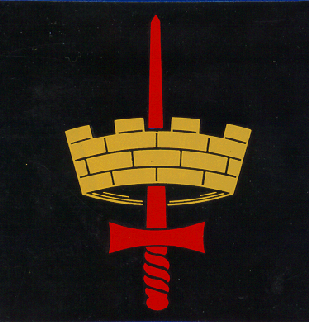
London District (LONDIST) is the name given by the British Army to the area of operations encompassing the Greater London area. It was established in 1870 as Home District.
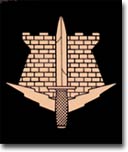
The Singapore Combat Engineers (SCE) is a formation of the Singapore Army. Combat Engineers provide mobility by bridging gaps and clearing minefields to facilitate speedy advance of troops into enemy territory, and counter-mobility by constructing obstacles such as anti-tank ditches to impede the enemy's movement. The Combat Engineers also construct trenches, drainage systems and other related infrastructure to enhance the survivability of troops during operations.

Collins Barracks is a military barracks on the Old Youghal Road on the north side of Cork in Ireland. Originally serving as a British military barracks from the early 19th century, it was handed-over to the Irish military following the Irish War of Independence, and remains the headquarters of the 1st Brigade of the Irish Army. A museum in the barracks is open to the public at selected times.
The 1957 White Paper on Defence was a British white paper issued in March 1957 setting forth the perceived future of the British military. It had profound effects on all aspects of the defence industry but probably the most affected was the British aircraft industry. Duncan Sandys, the recently appointed Minister of Defence, produced the paper. The decisions were influenced by two major factors: the finances of the country and the coming of the missile age.

The Alabama Army National Guard is a component of the United States Army and the United States National Guard. National coordination of various state National Guard units are maintained through the National Guard Bureau.
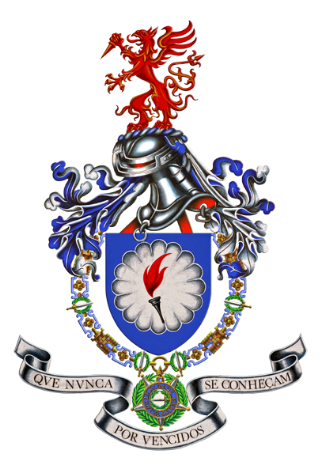
The Regimento de Paraquedistas, based in Tancos, Portugal, is a unit of the Portuguese Army and serves as the instruction center for recruitment and training of the Portuguese paratroopers. This unit includes an entire battalion, acting as support and reserve for airborne units which contains for example, military war dogs and airborne pathfinders and an instruction battalion responsible for the forming of new paratroopers.
The 11 Air Assault Brigade is the rapid light infantry brigade of the Royal Netherlands Army, focused on conducting air assault operations. Troops of the brigade are qualified to wear the maroon beret upon completion of the demanding training course, those qualified as military parachutists wear the appropriate parachutist wings. The brigade received the name "7 December" when the First Division "7 December" was disbanded in 2004.

2nd Battalion, Ulster Defence Regiment was formed in 1970 as part of the seven original battalions specified in the Ulster Defence Regiment Act 1969, which received royal assent on 18 December 1969 and was brought into force on 1 January 1970. It was, along with the rest of the regiment, amalgamated with the Royal Irish Rangers in 1992 to form the Royal Irish Regiment. It had previously been amalgamated in 1991 with the 11th Battalion Ulster Defence Regiment to form the 2nd/11th Battalion Ulster Defence Regiment.
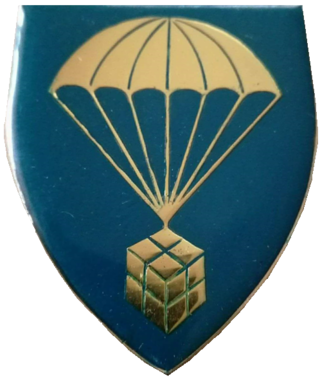
The 101 Air Supply Unit is a parachute unit of the South African Ordnance Services Corps. Formed in 1963, it has supported the 44 Parachute Brigade, now the 44 Parachute Regiment, since its establishment. It appears to be based at Lyttelton, Gauteng.

The page contains the current structure of the British Army. The British Army is currently being reorganised to the Future Soldier structure.
The 9th Battalion (Parachute), Royal Malay Regiment (Malay: Batalion ke-9, Rejimen Askar Melayu Diraja (Payung Terjun)), abbreviated 9 RAMD (Para) from its local name, is a battalion-sized airborne infantry unit of the Malaysian Army's Royal Malay Regiment. Since 10 October 1994, 9 RAMD has been a part of the 10th Parachute Brigade.

















